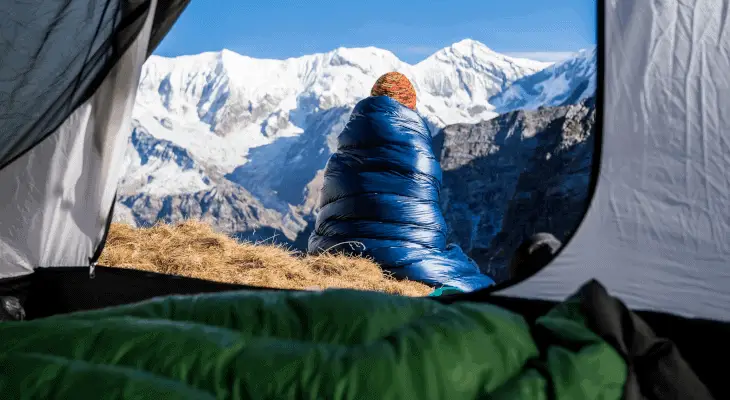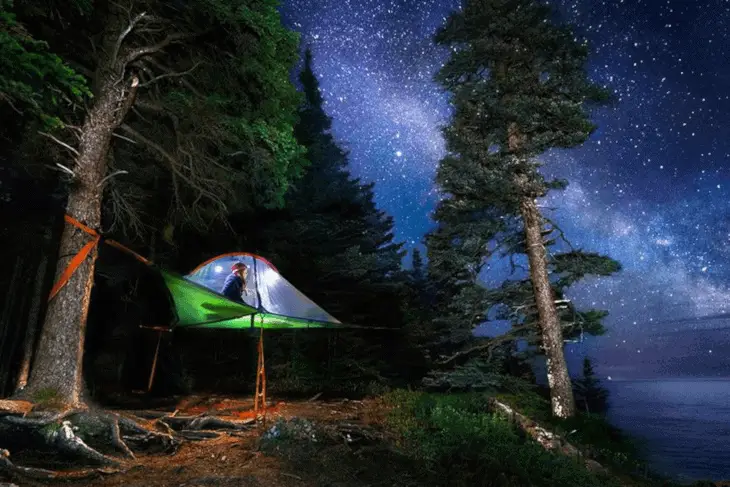It’s our great pleasure to bring you today’s interview, where we talk to Kevin, President of Seek Outside. Seek Outside is on a mission to bring outdoor gear—particularly lightweight and ultralightweight gear—to some of the most challenging, out-of-reach, and hunt-worthy places on planet Earth.
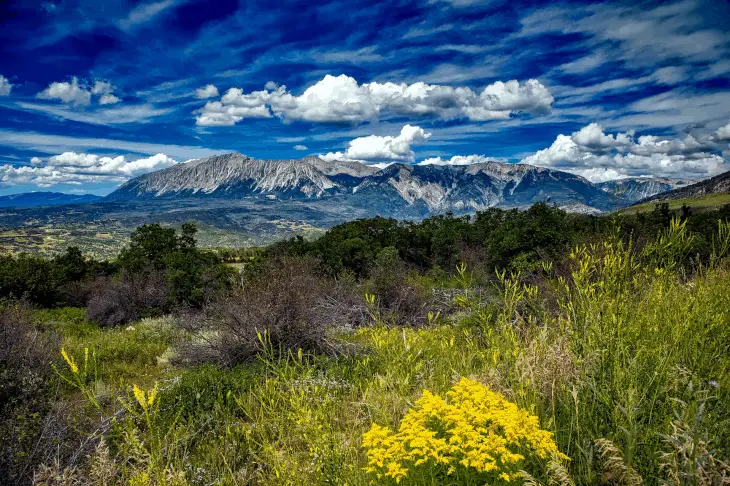
We cover a lot of ground in a short period of time, and touch on some really important topics: bowhunting, how to make the most of your equipment (and how to select it, if you’re a new bowhunter and getting a feel for multi-day trips), and how Seek Outside, as a company, gives back to both their employees and to the environment. It’s a great discussion, so thank you, Kevin, for your time!
(A quick note before we get to the interview: while there are links to Seek Outside products in this post, there are no affiliate links in this post, and there is no business relationship between Seek Outside and The Complete Guide to Archery. We just like their stuff and wanted to interview them, and that’s one of the really awesome things you can do when you run a website dedicated to archery and bowhunting.)
OK! Now onto that interview, and Kevin—thank you again!
Q: Welcome, and thanks for talking with us! For those of our readers who are unfamiliar with Seek Outside, would you tell us about your company and your history?
A: Sure. We’ve been building and selling backcountry gear since 2010, and it all really started out of our passion for lighter gear for family backpacking and hunting. We manufacture our products on the western slope of Colorado and use premium materials throughout, and we pride ourselves on a strong history of supporting conservation, mentoring, and backcountry education.
What I view we have done more than anything, though, is to have brought ultralight and lightweight design principles to more of a four-season and expedition mind set. We have customers that use our products all over the world and on self-supported expeditions into some of the harshest environments on earth.
That being said, though, I think the bulk of our products are used primarily for western big game hunting. That may be with rifles, but it can also be with bows, and various types of bows.
Q: It looks like Seek Outside takes corporate responsibility very seriously, and you’ve got some very clearly defined “Missions” listed on your website. Would you tell us about those?
A: Well, simply put, we want everyone to know where we stand, and what our values are. If new employees aren’t sure what we’re about, it’s clearly on the front page. At its core, Seek Outside exists to improve the all-season backcountry experience. We do that through products, manufacturing, education, and customer service.
In a larger sense, though, we do everything we can to help our customers succeed. Education, mentoring and customer service are all a part of that. It’s not enough to do it just for our customers, but we have to treat our employees the same way—we follow the philosophy of “a rising tide lifts all boats.” Of course, conservation is critical to this because we all need these special places to exist.
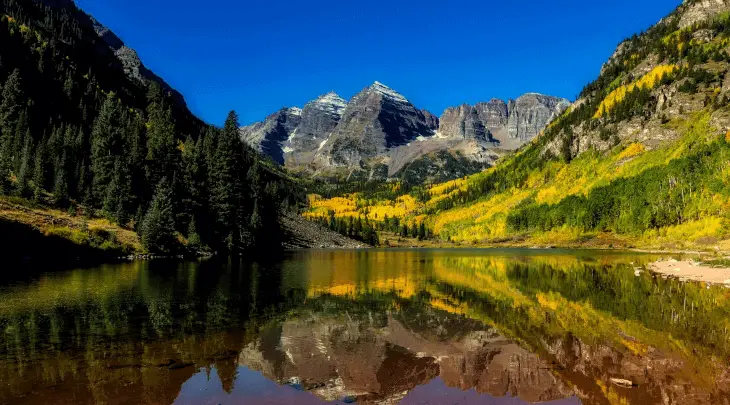
Q: OK, so—let’s talk gear! A lot of our readers are bowhunters and they’re always looking for overnight gear that will make their lives outside a little easier and a little more comfortable. It looks like you guys have the outdoor experience covered—can you tell us about your most popular products, and how they could help the bowhunters who visit our site?
A: Our Cimarron and Lil Bug Out Shelter are very popular with the bowhunters. For the lighter, more nomadic folks, they may prefer the DST tarp or the new Eolus we released this year. As for packs, it really is sort of across the board—all of our main packs work well in a fast and light hunt and for packing meat. Different folks prefer different feature sets and we really design often with a specific end goal. For instance, the Peregrine was designed to be a three-day archery season backpack, where the Goshawk was designed as more of a multi-tool. So when a customer says I love my Peregrine for hunting but it isn’t big enough for a family backpacking trip, so the answer is simple—it really wasn’t designed for that!
Q: For our new hunters who may not be used to spending their overnights in the great outdoors, can you give them a little guidance on how to get started? Any “advice for beginners” would be appreciated!
A: I would suggest they backpack a couple times first, even if it is only for a day or two. The act of adding in hunting and backpacking together can be a pretty big learning, curve especially if you are coming from somewhere like the Midwest or the East Coast to the mountains. I would really suggest taking a minimal approach from the beginning, and piecing together gear carefully.
What I often see is that people go and buy a lot of gear for their first trip, and then when they’re finally outside, they find they don’t use that much of it, or that some of it didn’t work as well as they hoped. Then they go and either sell it and start over or say, “Well, that wasn’t for me.”
The thing to understand with us at Seek Outside is we are very strait shooters—we don’t sell you stuff just to sell you stuff. We have a vested interest in each other’s success, and our customer service people are hunters themselves. We like having outdoor users be our service people.
So with that in mind, I’d recommend getting your gear in sequence. Get a good pack for your first time out, because after all, you’ll be wearing it all day, and if doesn’t work for you, it’s going to be not working for you all day. Then find a good sleeping bag, because a good nights’ sleep is essential to having the energy to hike and hunt.
Then, get a good tent, that works well when the weather is bad—because sooner or later, it will be! Nothing ruins trips like bad pack, a tent that falls down, or a sleeping bag that just does not keep you warm.
Outside of that, have a good time! It’s about the experience, more than anything.
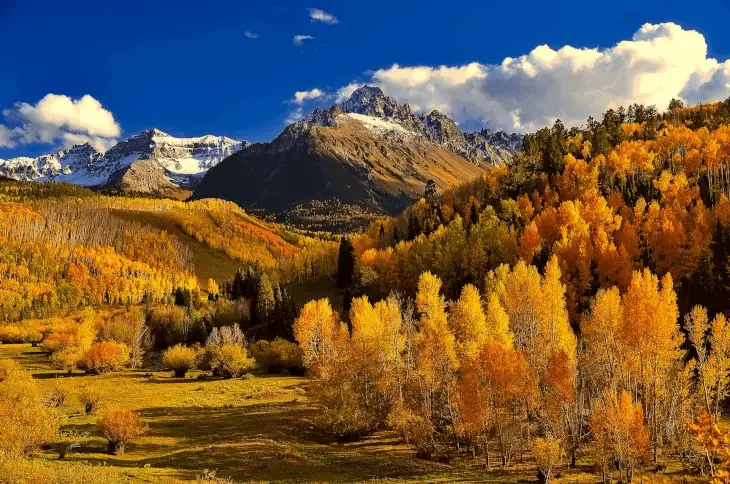
Q: You guys have really embraced your online presence, and you’ve got a very active podcast, an Instagram account with pictures that make us want to head outdoors right now, and a blog that you guys update regularly. What’s your approach to your “online presence”? It seems like a lot of companies try to connect with their customers and fail, but it seems like you guys are making easy work of it.
A: A lot of our content is submitted by paying customers, and the vast bulk of it is raw and unfiltered. Customers can submit photos and videos directly to our website, and we approve the vast majority of it, and sometimes put a note as the vendor to clarify something.
That being said, no one knows our gear like we do. We want to have that direct connection. When you communicate with us, you are talking to the folks who design it, build it, and QC it [Editor’s Note: “quality control”—testing gear to make sure it can withstand in-field use]. We feel that direct connection results in better products and experiences.
Q: Can you tell us a little bit about 2% for Conservation? It’s a great cause, and not all of our readers know about it, or why it’s so important.
A: 2% is really a company certification that says that we as a company have put a certain amount of our money and time back into conservation. It is a way to differentiate companies that give back in both time and money. By doing this, it helps conservation causes. Since we really believe in conservation, it’s important to show we put our money and time into conservation.
Q: Finally, our last question—what’s it like working for a company dedicated to outdoor adventures? For many of us, that would seem like a dream come true!
A: You know, it probably is a dream for many people. We get resumes from people all over the country. We get resumes from some really really good people who are very passionate, and I wish we had the capability to bring on all the people who have wanted to work for us, but we just don’t have that capacity right now. It probably moves a little slower than all of us would like, and sometimes things can get heated by our passion for creating better products.
That being said, we have a great team and culture. Honestly, my wife Angie is the engine that makes it all work. She’s the one that created the culture—I really like to go out in the mountains every chance I can! However, it is very important for us to have a talented team of people that are good people, that get outside, that have the same passions we do.
Q: Alright, that about wraps it up—thank you for talking with us, and thank you for the guidance about piecing together gear! That’s a great approach for new bowhunters to get the equipment they need.
< end >
A big “THANK YOU” to Seek Outside for talking with us! We hear so much these days about companies doing sketchy-at-best (and sometimes downright-awful) things, that it’s really uplifting to hear about a company making great products with the customer in mind, keeping a culture that actually benefits employees, and gives back through programs like 2% for Conservation. Thank you for the conservation, and all the best!


